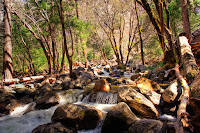UNIT 30 & 32 Evaluation
After our brief, we was then set to do task 1a which was split into two parts. Part one consisted of me researching these ten different approaches such as scratching negatives, double exposure etc. The next part was to look for photographers who used these experimental techniques, this helped me a lot, it influence my entire approach to this unit.
After the location brief the next task was 1b where you had to select three of the following genres that were listed. I chose Urban, social, and nature/wildlife. Once I had chosen my genres I was then instructed to list the common characteristics that you may encounter when in these locations.
Once the presentation was over I had to capture photos of the following genres;
- Social
- Travel
- Industrial
- Fashion
There were also two additional boxes on this sheet where you could add an additional two genres of my own. The two genres I came up with were nature and architecture. After i took these images I had to create a diptych of each genre. Then we chose on of our favourite diptychs and shared them with the class to critique. We then found out that our projects theme was time.
First we had to conduct some research into photographers who have worked with the theme of time in an experimental way, then we had to find out how they created these images and what techniques they used. From doing this we were supposed to generate idea because we got to focus on using shutter speeds, apertures, dop (depth of field) and ISO. We were then taught about how the depth of field extends one-third in front, and two thirds behind the point at which you have focused on.
We were then given a sheet that we had to write our apertures, shutter speeds, and iso down because we would be experimenting with taking photos at different apertures. This was an indoor and outdoor task.This task really helped me a lot to understand aperture, and depth of field.
Next was learning about pinhole cameras, after the brief we were then brought to a room where there was some sort of pinhole like device which was made so we could see the outside as a pinhole but upside down of course because there was no mirror to bounce the image back up right. After everything we had to create our own pinhole cameras out of match boxes and film canisters. Sadly though after I took all my pinhole shots I exposed the film.
The next task was image weaving which is where you have two images and you have to cut them individually into strips. A lot of people found this difficult, but i found it quite easy even though my first weave failed.
After photo weaving we had to do some photomontage research in which we had to show both traditional and digital ways. Then once we did that we had to research David Hockney joiners and choose four that would fit our theme of time, this would then inspire us to do our joiners the next day.The next day we were taught how to shoot a joiner and then we went out and shot our joiners, once back at college we were then taught how to create a joiner in photoshop.
The next presentation we were taught about panning. After the presentation we were given a data sheet which we would write all our shutter speeds, iso and aperture. Once we had been given we had to go out and shoot our own panning shots. Then fill in the sheet each shot.
The next task was for us to write research on low light and painting with light in photography. After the research we were given a re-cap sheet were we had to list three things we needed to consider when doing low light photography. We then went on to do our light painting shoots, and after the shoots we had been given another re-cap and review sheet in which we had to write what camera settings we used, did we change the settings, and why. Then we answered a couple other questions on the sheet.
Next we were given a checklist of what we had done throughout this entire unit, I had to make sure that I had done everything and sadly I hadn't done everything. Well more importantly the film side of the units, the reason being my first roll was exposed, my second was developed wrongly and well my third has currently been sent of to be developed.
So I had everything but my film and my star trails, now the reason I didn't have my star trails was because I previously attempted shooting it and the street lamps affected my shot and also because there weren't many stars out. But this hasn't stopped me from still trying to do my star trails but annoyingly the weather has been very cloudy at night so I hadn't been able to do the star trails a second time.
Next task was to create a presentation, a simple presentation about my research, how it inspired me and how it has helped me create my final images. The presentation was easy to create but sadly on the day of presenting my anxiety kicked in and i rushed my presentation, I barely said any of my points that I had planned and my presentation probably lasted a total of 40 seconds.
Overall I would say this unit has been the most challenging but has also been the most knowledgable for me because I learnt many different techniques which have inspired me to use them in my own recreational photography.




















































